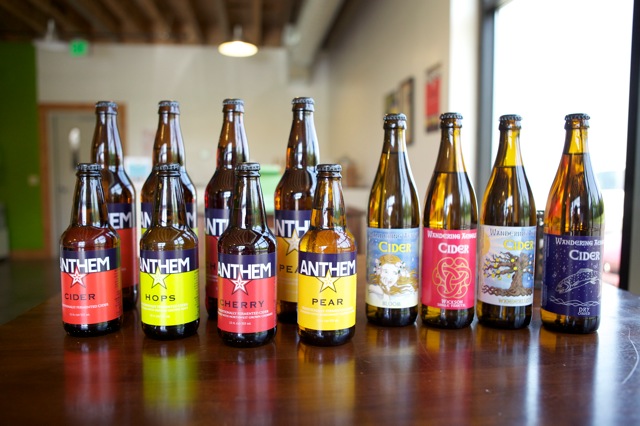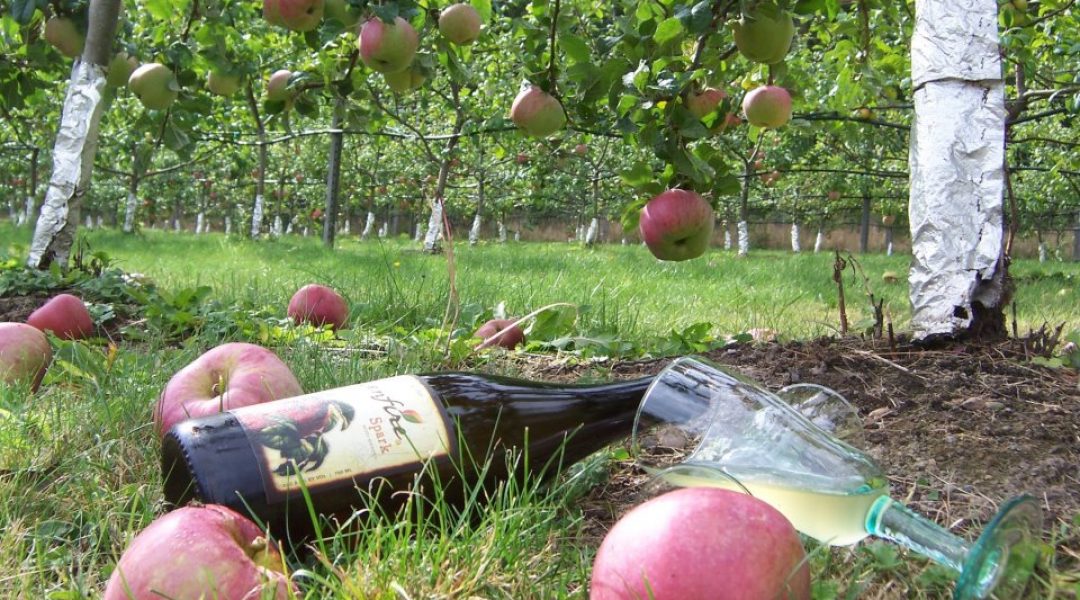Cider shares the craft beverage limelight in the Pacific Northwest.
Washington is rightly known as a hot spot for craft beer, thanks to the state’s ideal climate for growing hops. But there’s another crop for which the state is famed, and it’s the primary ingredient in another booming craft beverage.
Apple cider was once the most popular alcoholic drink in America, says Nick Gunn, president of the Northwest Cider Association. But during Prohibition, cider-apple trees were cut down, and the industry never recovered. (Table apples are much sweeter than the bitter, astringent ones used for dry ciders.)
Recently, though, hard cider has made a comeback, says Emily Ritchie, the association’s executive director, and the industry is enjoying phenomenal growth comparable to the recent craft beer boom. In 2010, the Northwest Cider Association had seven members. Today there are 80. Twenty-nine of those are in Washington.
Gunn credits a few factors for cider’s blossoming popularity in the Northwest, including the area’s influx of young entrepreneurs to the area, similar expansion in craft beer and wine, and demand for gluten-free products. Nationwide, he says, cider makes up 1 to 1.5 percent of the alcoholic beverage industry, while it’s 5 or 6 percent in the Northwest.
The craft cider industry is so young it doesn’t have universal terms for types of cider. But there’s a wide variety: sweet, dry, sparkling, still, hopped, barrel-aged. They can be made with other fruits or honey, and fermented with various yeast strains or wild-fermented in the farmhouse style. There are hazy ciders and clean, wine-style ones comparable to champagne. Which one is best for your palate? Ritchie recommends finding a good bar or tasting room and ordering a flight to sample the wide range of flavors and find out which ones you like.

Cider Suggestions
Two Pacific Northwest-based experts share their cider recommendations
Nick Gunn, president of the Northwest Cider Association: Though he no longer has a stake in the company he cofounded, his top choices still include Wandering Aengus for Old World-style dry ciders and its Anthem Cider for a more sessionable fruit-driven drink. His other picks: Finn River Cider experiments with wild yeast strains and offers farmhouse-style ciders. Seattle Cider Company’s offerings are more sessionable, with unique blends and an enthusiasm for experimentation similar to craft breweries. Whitewood Cider Co. is a small but high-quality operation that creates unique ciders from old apple varieties. nwcider.com
Kate Smith, the blogger behind Cider Says: Her all-time favorite is Alpenfire Cider’s Smoke, “a unique, bold, and complex 16-percent ABV barrel-aged cider.” She also likes Liberty Ciderworks’ port-like single-varietal Manchurian Crabapple; Schilling Hard Cider’s King’s Schilling, “a budget-friendly and tasty but easy-to-drink apple-brandy-barrel-aged and fortified cider”; and Snowdrift Red Cider, “a fruity cider made from red-fleshed apples, a rare variety that originally hails from Kazakhstan but is now grown in their orchard, is literally crimson red instead of off-white inside, and creates a rosé cider.” cidersays.com
Washington Cider Week is September 7 – 17 and includes food pairing menus, tap takeovers, limited releases, and other events across the state. Visit nwcider.com for more information.
From the October 2017 Taste of the West issue.














